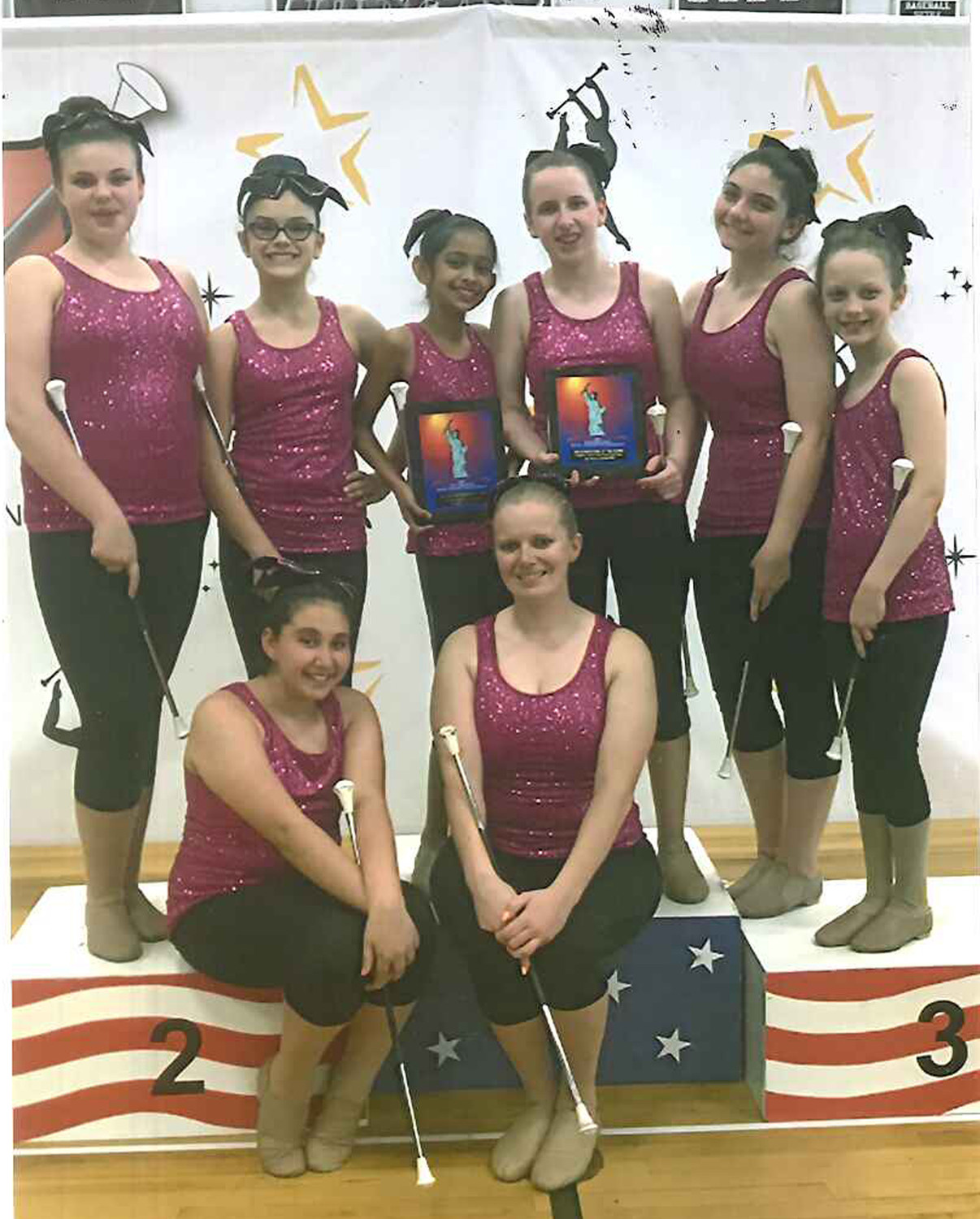Valley Stream twirlers place first in regionals, nationals
As two groups of girls warmed up in Valley Stream’s Grace United Methodist Church gym on a cloudy Saturday last week, it wasn’t clear whether they were dancers or cheerleaders — or both. Some practiced with arms outstretched to an imaginary barre, while others pointed their toes in dance movements, under the watchful gaze of a ballet mistress. Others worked out new choreography.
What was distinctive about these groups of girls was the long metal rod each held in her hand. They were twirlers, and the metal rods were batons.
After a successful summer competing in regional and national competitions, the Grace Thunderettes Baton Twirling Team was forming new squads for the 2018-19 season.
The Thunderettes took first and second place in the Northeast regional competition in Kutztown, Pa., in June. Three girls won prizes in the senior trio division — age 14 and up — at the national finals in Jacksonville, Fla., in July and earned two first-place awards in individual events.
The Thunderettes are a labor of love for founder and director Nancy Wasek, a third-generation twirler. “I learned from my mother,” she said, “who learned from her mother.” Wasek, in turn, taught her daughter, Elizabeth, who is a twirler and one of the group’s chief choreographers. Both expect to teach any potential granddaughters.
“I started in fourth grade,” Wasek said. “I won my first competition in seventh grade and started teaching when I was 13.”
“Except for majorettes, people aren’t that aware of twirling in this part of the country,” according to Wasek. Even then, when she asked to be a majorette at Valley Stream South High School, “most people didn’t even know what a majorette was,” she said. After lobbying school officials, she was eventually given permission. “They wouldn’t
let me twirl with fire, though,” she
said. “They were afraid I’d set the grass on fire.”
Wasek formed the Thunderettes in 2006, and the group is open to children starting at age 2. Boys aren’t excluded, Wasek said, but “you don’t see
that many. But the ones you do see are very good.”
On Saturday, two young girls practiced basic dance moves and hand coordination under the direction of Pat Gannon, a former ballerina with the famed Ballets Russes de Monte Carlo. In addition to twirling, they rehearsed one- and two-handed catches. At the same time, the senior group worked out a new routine that included coordinated throws. Batons whirled through the air in pinwheel fashion to be caught by the girls behind; girls in the back row tossed to the girls in the front. Even at rest, the girls twirled and flipped the batons in a dizzying array of spontaneous maneuvers from hands to arms to shoulders in movements that appeared completely natural, as the batons became extensions of their arms.
Samantha Rodonis’s daughter Emma, 2, joined the group in January. “A coworker told me about it and said they were forming a new group and asked, ‘Why don’t you come?’” Despite her age, Rodonis has been impressed by Emma’s progress, despite her short attention span. “She learned an entire routine. She loves it!”
Like Rodonis, Susan Mejia, whose daughter Kadeila joined the group at about the same time as Emma, had no prior experience in twirling. “I heard about it from one of the other mothers in Cub Scouts.”
Twirling has two basic patterns: the figure 8, in which the twirler twists the baton using the wrist; and hand movements, in which the baton is passed through the fingers in a fashion reminiscent of the way magicians manipulate coins. Twirlers must be able to use either hand — or both— in tandem or independently.
The batons come in varying sizes, depending on the twirlers themselves, and have weights to keep them balanced. “They used to be much heavier,” Wasek said. Now, they are made of lighter composites, which make it possible to throw them higher.
Neither Wasek nor her daughter knew of any professional twirlers, but many colleges and universities do offer scholarships.
“Twirling used to be my stress-buster,” said Elizabeth, who is completing her studies in childhood education at Queensboro College and wants to teach. “I used to twirl two or three hours a day.” As she got older, though, she developed other interests — “boys,” she said laughing — and the time constraints of studies and work left less time for twirling. Still, she joins her mother each Saturday from 11 a.m. to 2 p.m. to choreograph and rehearse.
Wasek spoke admiringly of women in their 50s and 60s who were still twirling, and it was clear that her own enthusiasm had not waned. “You know how some people have those eternal flames on their gravestones?” she asked. “I want mine to have an eternal baton,” and she went on to describe a stone with a tiny baton on top twirling round and round and round.

 44.0°,
Mostly Cloudy
44.0°,
Mostly Cloudy 







